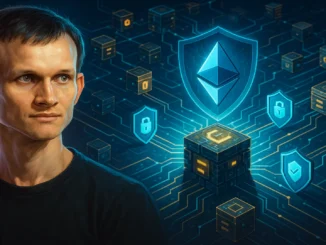
The most significant steps were recorded to have been taken by the Sonic blockchain, which reached an impressive transaction finality of 720 milliseconds during its testnet phase. In blockchain, finality is the guarantee that a transaction is unchangeable once it is added to the ledger; hence, ensuring security and speedier processing.
Sonic was designed as an EVM chain and positioned as the world’s fastest. The feat was achieved with guidance from no less than Andre Cronje himself, founder of the Fantom Network and CTO at Sonic Labs.
Comment of Andre Cronje on Sonic’s Speed
Andre Cronje, one of the most popular personalities in DeFi, made his excitement known on Sept. 8 via X, formerly called Twitter:
400ms responsiveness perfect for synchronous events. 720ms finality true, not probabilistic – no ‘please wait 30 blocks’.
Most blockchains take upwards of a few blocks for transaction irreversibility, but Sonic has this time down to just over 700ms-a new benchmark for blockchain network finality.
Potential of Sonic to Be the Fastest Blockchain
While this is in a testnet environment, which sometimes artificially inflates the performance compared to real scenarios, this finality is nonetheless impressive. As Cronje explained, if Sonic continues at this rate of finality after mainnet, it will be the fastest blockchain network in terms of transaction finality.
Right now, Solana leads the way, with its mainnet recording block finality after 12.8 seconds. In order to achieve full and absolute finality, Solana requires 31 confirmations, while the responsiveness of Sonic to blocks in 420 milliseconds is in a league of its own.
Developers Come First
Above being a fast network for transaction speeds, it is going to be the home base of blockchain developers, too. According to Cronje, as much as 90% of all gas fees collected on the Sonic network would be returned to developers-meaning an economic incentive to innovate and develop.
Development of Sonic was also backed up by support from the Fantom Foundation. Earlier this year, for example, it said it would set aside $120 million in Fantom tokens as an incentive for developers to port their work from the Fantom on to the Sonic-a strong statement of its future status as a blockchain for developers.
A Bright Future Ahead for Sonic
The future is bright for Sonic, and with further pushes into the new frontiers of blockchain speed and developer involvement, it may just turn out to be one of the, if not the, fastest blockchain networks around. With the full weight of the Fantom Foundation behind it and with the mind of Andre Cronje, it could easily turn into the chain of choice concerning speed, efficiency, and decentralized application development.
With Sonic inching ever closer to a full release, the blockchain world will likely hold its breath in anticipation of whether or not testnet successes actually transition into dominance in the real world.


